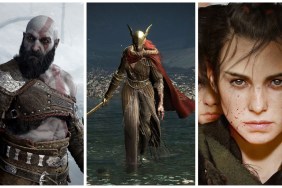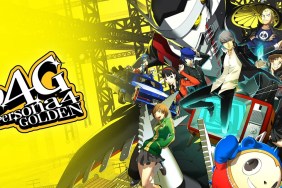Cease and DCist.
Here’s a new idea for a super villain. Cap’n Bland. Oh, no no wait. Reverend Bland! When he catches superheroes, he, like every other super bad guy, sermonizes to them. But here’s the catch, his sermons are his superpower! He makes bad joke after bad joke, outlines his micromanaged plan for world domination, and occasionally even breaks out the dreaded power point presentation. It’s rumored that once he even made the Care Bears stop caring.
In his off time, Reverend Bland might pick up a copy of Justice League Heroes. His penchant for tired, repetitive, dead horses would perk at the sight of another Snowblind Engine game. Oh, you don’t know the tragic saga of the Snowblind engine? Gather round kiddies and I’ll tell you a horror story about the deadest horse of all.
[image1]The Snowblind engine made its first debut in an action-RPG called Baldur’s Gate: Dark Alliance back in 2001. Everyone loved the cooperative third-person play and the character models that could be outfitted with armor and weapons. We were even happy when it was resurrected as Dark Alliance 2, though we began to get suspicious when it appeared yet again as Champions of Norrath.
Then came the Snowblind avalanche. You could find the same game, just with different costumes and names, here, here, here, and imitations here and here. It has been five years (and a console generation ago) since the engine was released, and its effects have neither been updated nor, apparently, exhausted.
Justice League Heroes is just another tread mark from the caravan of trademarked licenses to pick up the Snowblind engine on the cheap. In this game, you play as the set of DC superheroes—Superman, Batman, Wonder Woman, Flash, etc.—crawling through baddie-populated cityscapes and dungeon-like futuristic labs on your way to saving the world from super bad guys Brainiac and Darkseid. The plot involves some extra-dimension cube thingy but don’t mistake that for meaning the plot has three dimensions. It’s the typical save the world thing, here you seem to be saving it from being transformed into a cool Nine-In-Nails Goth club scene. Did I mention the engine was dated?
You always play as one of two on-screen heroes. Like Lego Star Wars, another human player can jump in at any point, which is cool. When not controlled by a friend, the A.I. takes over, doing all the stupid things (rushing into battle with no health) that you imagine a computer to do. Brainiac, my ass.
The enemies are just as dumb, each charging when you get close enough to trigger its “charge” directive. The rank and file evil robots and mutants are as generic as the unrecognizable bosses. Most are just big dudes who are hard to kill, some have special shields and attacks, but you won’t find anything new in any of the combat, front to back. The bosses themselves are really obscure DC figures: characters I’ve never heard of like Queen Bee and The Key. But given their stereotyped voices, motives, and behavior, there might be reason for that.
[image2]Each hero has his or her own unique set of super powers–unique in that they have different names. Each character has some version of a few basic power types: Superman’s ranged-attack heat vision, for example, is not significantly different from Zatanna’s fireball spell or the Green Lantern’s shooting green ray. Most characters also have some sort of super-melee attack and an area-of-effect attack. There are some good variations. Batman’s batarangs, for instance, home slightly and can be thrown in bunches, and the Green Lantern’s hammer smash is a versatile area-of-effect attack as well as the most satisfying move in the game.
However, for every cool super power there’s a Reverend Bland variation. Wonder Woman’s lasso attacks, which are supposed to pick up and twirl bad guys, are hard to use, and Flash’s whirlwind attack doesn’t seem to do much at all. Batman’s “bat beacon” attack, which sends a swarm of bats to attack one bad guy, is as lame as it is all-powerful. Forget strategy, just throw a bat beacon and watch out for the guano.
Speaking of guano, the inability to choose which hero you use for most levels stinks of super-rodent super-feces. On a few special levels, you must split up your heroes into separate teams (which is actually pretty cool). But most of the time, your character choices are given to you, like Halloween costumes when you were a kid. I didn’t want to be Aquaman then, and I don’t want to be him now.
This lack of choice is not just bland, but possibly game-ending. The levelling-up system gives you a couple of points for each new level. You can spend the points on basic health and combat attributes or on the much sexier super-powers. Beware, though, because somewhere late in the game two seldom-used, and thus low level, characters get paired together in a near impossible stage. If you spent points on anything besides health and combat, you could be toast forever (there’s no way to backtrack in autosave mode).
And that’s really a shame, because when you discover that health and combat points are all that really matter in most of the game, the whole super-hero thing becomes a drag. The super-powers level up as you spend points on them, but they always feel canned. In an attempt to spice it up, the game even adds “booster” points, which can be combined like potions and then “slotted” into super powers to make them more powerful. The boosters are certainly useful, but since they have no effect on the visual aspect of the game they are just some silly and unfun stuff to screw around with. Reverend Bland strikes again!
[image3]Unlike Baldur’s Gate and the other D & D incarnations, Justice League Heroes lacks customizable weapons and armor. You can unlock new costumes for each character, and you can unlock new characters themselves, but that doesn’t mean that you have a lot of options. Heck, two of the unlockable characters (different incarnations of the Green Lantern) are the exact same as the original Green Lantern. The game may say they are different characters, but we know better.
The graphics are passable to laughable. If you’ve seen Snowblind in action before, you know what to expect: small figurine-sized heroes punching and kicking through mazes. Things move quick and don’t slow down much, even when there are a lot of explosions on the screen. But the cut-scenes are of amateur quality—the characters appear made of uniform silly-putty, and none of them have elastic superpowers!
Some money was spent on voice-acting, Ron Perlman being the biggest name of the bunch—but the script falls flat, unable to deliver a joke or a piece of character development. Of course, it’s hard for any script to succeed when acted by silly-putty superheroes. The music is straight from Reverend SuperBland’s shelf of action adventure classics.
The most distinguishing feature of Justice League Heroes is its complete lack of any. The game’s one, toted new feature, the ability to pick up rocks and sticks, is literally primitive. Justice League Heroes is justice on the order of parking tickets and income taxes, an unsurprising and tedious cog in the doleful gears of commercial repackaging.
-
The engine still works
-
The engine is five years old
-
Co-op play
-
Few customization options
-
Forced character choices
-
Weak story
-
Unimaginative boss fights










